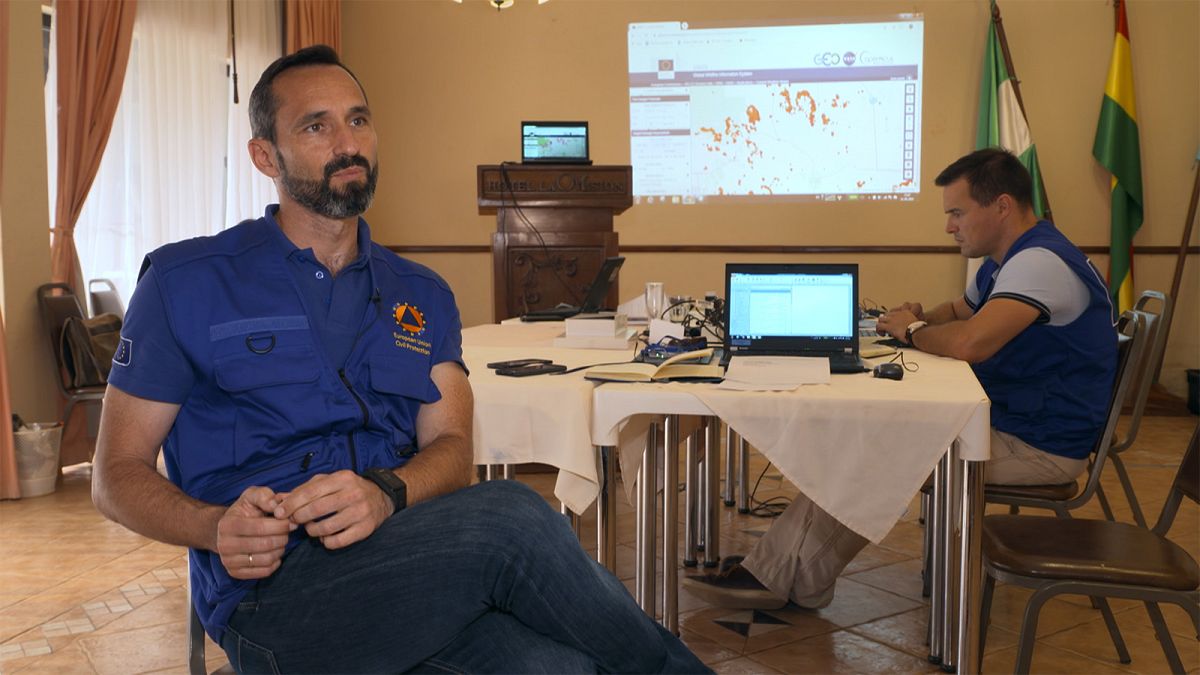Activated 300 times since 2001 inside and outside Europe, the EU Civil Protection Mechanism is triggered whenever a country is overwhelmed by the scale of an emergency and calls for support. But how does it work?
Activated 300 times since 2001 inside and outside Europe, the EU Civil Protection Mechanism is triggered whenever a country is overwhelmed by the scale of an emergency and calls for support.
Ivan Herreras Hernandez is the team leader of the EU Emergency Response Coordination Centre deployed in the Bolivian municipality of San Ignacio to respond to wildfires.
He explains how the mechanism works:
"The Civil Protection Mechanism is always triggered at the request of the State. The State undergoing the emergency requests support from the European Union."
"At that time Brussels sends a notice to all member states to assess the possibility to support that third country or even to a Member State requesting help."
"Once the countries inform Brussels of the capabilities they can provide, whether they consist of assistance or units, these are offered to the State that initially made the request."
"Depending on what the country accepts, the aid will be sent. We are here right now coordinating the arrival of all that assistance and equipment that Bolivia has accepted from the countries that have offered it."
"In an emergency, the key is always coordinating the resources available. Not only here in Bolivia, but anywhere in the world. The key is to coordinate all the resources that sooner or later will be available."
"The first thing that hits you here is that we don’t find the same structure we are used to."
"The first thing you have to do is to adapt to what you find here, which is neither better nor worse than what we have."
"It is simply the solution this country gives to this problem. Therefore we need to know how they are structured, and that takes time, in order to know who is who and who is the best authority we can address to at any time. Then you have to be flexible and suggest the best possible solution.”
"We cannot be so ambitious as to try to put out all the fires. In this case, the team has to coordinate the arrival of the aid and the deployment of the capacities that can be sent to support the firefighting activity."
"Once the coordination has been made and the aid distributed, our mission is over. We cannot do the work the country has to do by itself."
The Mechanism also contributes to the exchange of best practices and the development of higher common standards enabling teams to better understand the others’ approach and work interchangeably when a disaster strikes.
